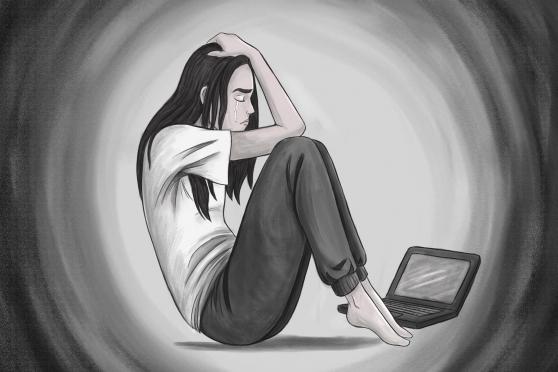
Even in a "normal" school year, students come to school carrying more than notebooks and pencils in their backpacks. They're also carrying the weight of anxiety, fear and trauma in their lives.
This year, students and teachers alike are grappling with the stress of the COVID-19 pandemic — and schools have an important role to play in helping children cope.
"The pandemic is a traumatic experience for everyone," says Maureen Eigenfeld, a social worker at Bronx Writing Academy, a UFT United Community School in Concourse Village. "Because our students are so young, trauma can change the chemistry of their brains before they're developed. And that can affect their entire life going forward."
Students have always confronted trauma. An ongoing landmark study by the Centers for Disease Control that began in the mid-1990s focuses on the effects of what it coined Adverse Childhood Experiences: abuse, neglect and household challenges. The study has found that children with high Adverse Childhood Experience scores can confront social, emotional and even cognitive impairment that correlates with higher rates of disease, disability and early death later in life.
It's nearly impossible to quantify the ways in which the pandemic has disrupted students' lives.
"In our school, many families unfortunately don't have jobs that give them the opportunity to work from home," says Eigenfeld. "So our students are at home learning, but they're also taking care of siblings, or they have other responsibilities like cooking and cleaning. They may have lost family members to COVID-19. Sometimes they're doing their work late at night because that's the only time they have privacy or access to technology."
Experts at the National Child Traumatic Stress Network suggest that educators can have an impact on children confronting trauma by helping them feel safe, connected to a community and hopeful about the future. To do that, some educators suggest we need to aim for a systemic shift in the way we approach teaching and learning this year.
"No one's going to learn if they're not there emotionally, and we need to be very intentional in recognizing those needs," says Shameeka Hunter-Tindal, a coach who supports teacher leaders in the Bronx.
Teachers are used to assessing and addressing students' academic needs. This year, Hunter-Tindal says, they need to assess and address social-emotional issues, too.
"You're not passing judgment; you're thinking about what you notice," she says. "You're building a toolkit of strategies, whether it's a read-aloud about a particular issue or a restorative group to help students discuss their feelings."
Hunter-Tindal encourages school communities to embrace a team approach to trauma-informed education.
"Schools need to take on the responsibility of providing more professional learning for teachers to be able to set up classroom structures that ensure that social-emotional learning needs are being met, because this work is really challenging for teachers to do in isolation," she says.
Another UFT United Community School, PS 184 in Brownsville, Brooklyn, has done just that.
"Our social-emotional team has been planning since the summer: What does support look like for our children? Our teachers? Our parents?" says Marcia Aristil, a social worker at the school.
Out of those discussions, educators at PS 184 have adopted new curricula — Reboot, a mindfulness practice, and Rethink Ed — aimed specifically at social-emotional needs.
At Bronx Writing Academy, a middle school, "the most important thing we are working on is fostering relationships with the kids before we do anything else," says Eigenfeld. "Some of them have never met us in person. We want to find common ground and get them interested in us as people. If they're able to open up to us about their lives and things they enjoy, they're more likely to come to class."
Eigenfeld says everyone — educators included! — needs at least one person in school and one person at home they can turn to in a crisis. Teachers should make it a point to find out who each student's sources of support are.
Something as simple as a daily "emoji check-in" in a Google Classroom can help teachers take their students' emotional pulse. Some students, even those who are not learning remotely, may be more willing to express themselves virtually.
"I have a Google Classroom just for mental health resources," says Eigenfeld. "Students can find calming rain sounds for doing independent work, arts and crafts, breathing exercises and other activities."
Above all, educators stress, it is important to let students' mental health be the priority this year.
"Our job as educators is to set students up for success as adults in society," says Hunter-Tindal. "If we avoid these issues or we don't support and empower our students to overcome the barriers they're facing because of trauma, we're not really doing our job."